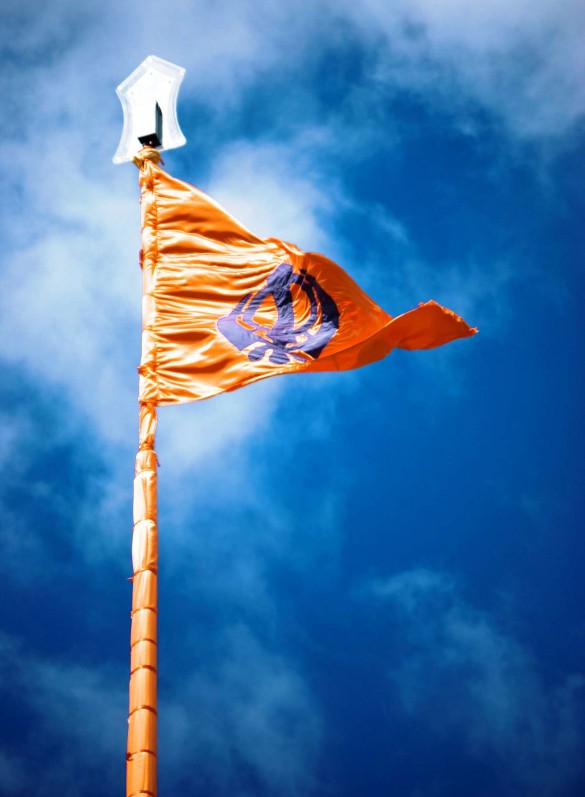
The triangular Sikh flag that identifies all gurdwaras and other sacred Sikh locations is known as the Han Sahib. A flag or standard is one of the many meanings associated with the Persian term Nishan. Here, the Arabic word sahib—an honorific with the applied meaning of lord or master—is employed.
Also Read:Bhai Mardana Ji: First Companion Of Guru Nanak Dev
According to Sikh tradition, Nishan Sahib refers to the "holy flag" or "exalted ensign"—a symbol for the principles of the Sikh religion. The Nishan Sahib is revered by Sikhs because it represents the fundamental principles of the Sikh faith: the existence of one God, the equality of all people, love and respect for everyone, a life dedicated to service and dedication, etc. A similar term is Jhanda Sahib, which similarly refers to a flag or banner, but this is rarely used since it typically denotes a sense of national identity. The Sikh pennant has a triangle design and is typically twice as long as the shorter side. It is made of saffron-colored material, though it is occasionally made of blue fabric, mostly for Nihangs. The top of the pennant is stitched to the mast sheath, which is made of the same material.
The Sikh insignia, which consists of a khanda (two-edged sword), chakra (an edged circular weapon, a disc or quoit), and two kirpans that cross at the handles with the blades flanking the chakra, is frequently embroidered or printed on the flag. The word Ik Onkar, which refers to the Supreme Reality in the Mool Mantar, may occasionally be written on the flag.
Also Read:The Art of Miniature Sculpting: Tiny Masterpieces with Great Detail
The Nishan Sahib is carried at the front of Sikh processions outside of gurdwaras. Five Sikhs, known as Panj Piare, carry one of the five Nishan Sahibs in front of the palanquin holding the holy Guru Granth Sahib during such public marches, which are typically held at religious festivals. Almost often, Sikh public congregations begin with a flag-hoisting ceremony in which a prominent Panth member unfolds the Nishan Sahib.
The Sikh standard was carried in front of the Sikh forces when on the march or in battle by nishanchis (standard-bearers) earlier in the time of Guru Gobind Singh and during the eighteenth century. For this reason, one of the Sikh misls was given the name Nishananvali Misl. This misl was a fighting organization unto itself and may have supplied nishanchis to other misls. The Sikhs regularly pray chaukian, jhande, Bunge jugo jug atal (may our choirs, standards, and citadels flourish forever) as part of their areas or routine supplicatory prayers. In fact, they do this every time they pray, whether alone or with others.
Also Read:Bibi Nanki Ji: Founder Of Sikh Faith
The Akal Takhat (or Akal Bunga) in Amritsar, which was built in 1606 and is where the Nishan Sahib's origins can be found, was covered in a flag by Guru Hargobind when it was first raised. The flag, the first of its sort in Sikh tradition, was known as Satguru ka Nishan or Akal Dhuja (the eternal flag). Sardar Jhanda Singh of the Bhangi clan initially erected the flag atop the Harimandar in 1771. A tall sal tree was transported from Dera Ram Rai (Dehra Dun) in 1783 by Udasi Mahants Santokh Das and Pritam Das, who used it as the flagpost and raised the Nishan Sahib in front of a bunga (a hospice or resting place) next to the Akal Takht whence this bunga acquired the name, Jhanda Bunga.
Also Read: Bhai Mani Singh Ji: Great Sikh Personality